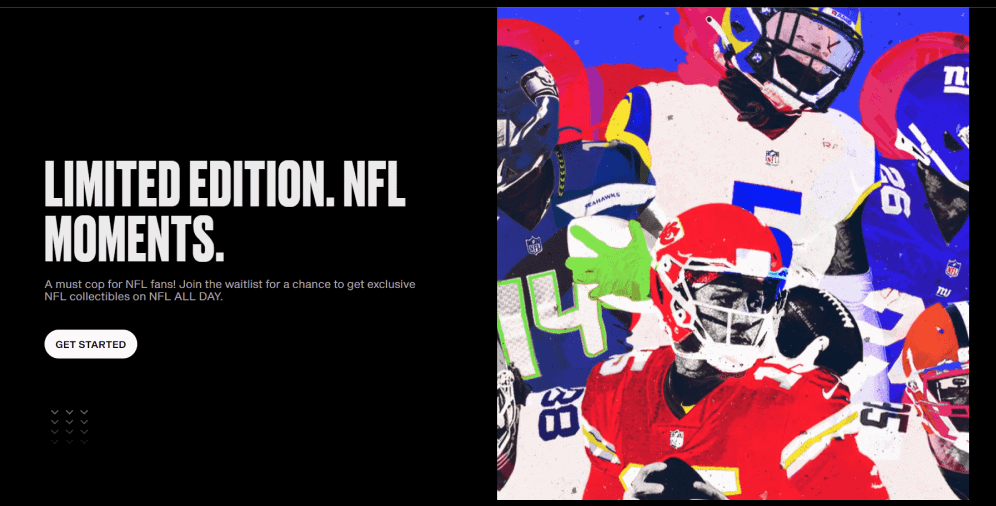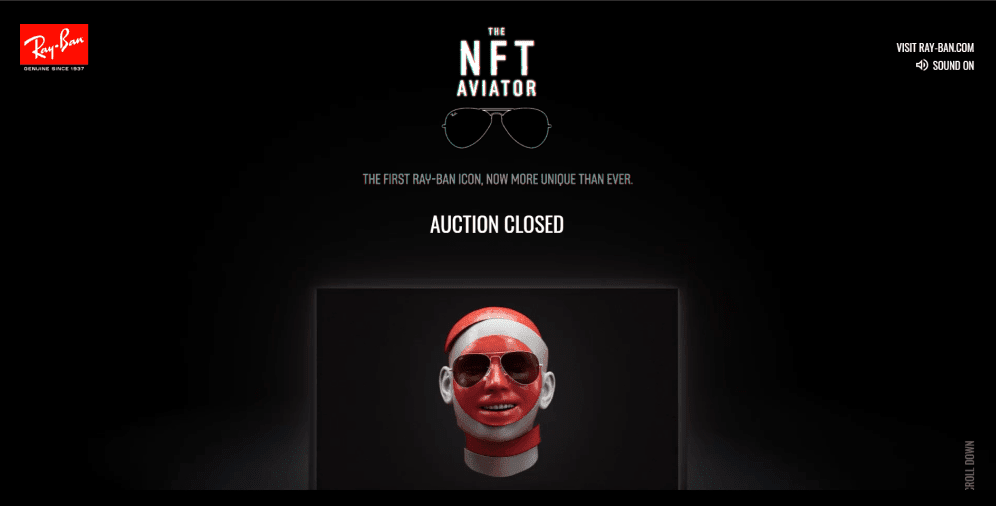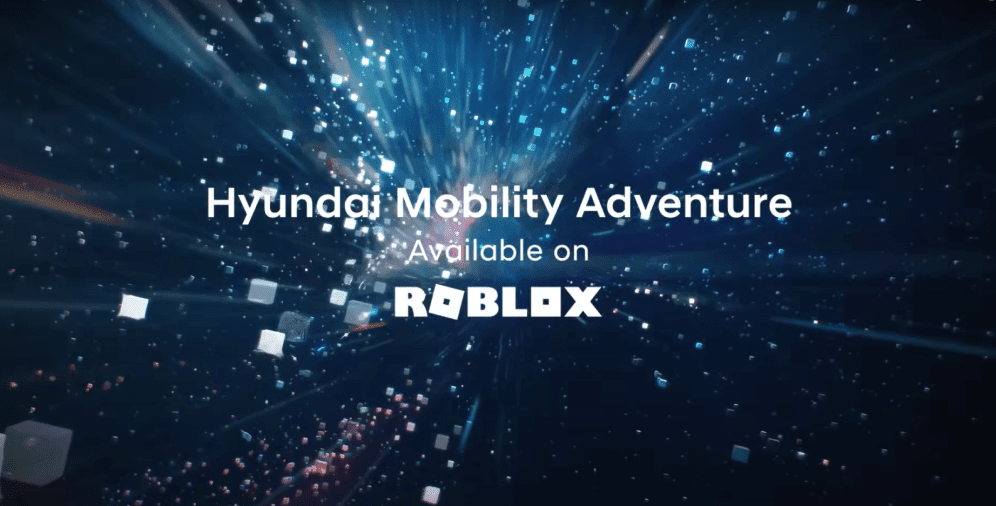Outline:
The digital landscape is in a constant state of evolution, bringing with it new challenges and, subsequently, solutions to address them. Failing to keep up with this pace can result in being left behind. Ideas that once seemed far-fetched may now be indispensable for today. The term “metaverse” was once shrouded in mystery, but now it has become the latest buzzword among digital communities.
Initially, it was difficult to imagine a virtual experience being all-encompassing. However, as the concept continues to be explored, the transition from offline to online is becoming more seamless. It is imperative that we do not overlook this trend. Therefore, it is essential to understand what the metaverse is, its significance in UI/UX design, and how to become part of it.
In our article, we will delve into this topic to gain a comprehensive understanding of the metaverse, its core benefits, and explore some tips on how to join it for business in 2023.
Overview of Metaverse: From Binocular Vision to Blockchain Economy
The concept of the metaverse may seem like a recent phenomenon, but its roots run deep. The idea of binocular vision, where two images are combined to create a single 3D image, was introduced in 1838. This was later developed into stereoscopes, which created a 3D illusion using depth perception. The first virtual reality (VR) machine was created in 1956, providing an immersive experience by incorporating audio, scents, and vibrations to simulate riding a motorcycle. Modern VR headsets follow a similar approach.
The term “metaverse” was coined in 1982 by Neal Stephenson in his novel Snow Crash. His metaverse was a virtual world where characters escaped from a bleak totalitarian reality. Over time, VR machines were adapted for the gaming industry and sports broadcasting, with Oculus VR being acquired by Facebook in 2014. In 2021, Facebook was rebranded to Meta, and VR/AR technology was extensively adopted by brands.
The Covid-19 pandemic created a sense of fatigue and urgency for new solutions, leading to the emergence of blockchain and non-fungible tokens (NFTs) as the backbone of the new epoch – the metaverse. As a result, understanding what the metaverse is and its significance in our digital world has become a subject for discussions.
Concept of Metaverse: Creating an Immersive Virtual Reality
The metaverse is a culmination of the technological advancements highlighted earlier. It is a vast project that aims to merge web development with cutting-edge technology to provide users with an unparalleled virtual experience. Essentially, the metaverse is the next generation of the internet, enabling users to navigate through a virtual space instead of two-dimensional screens. This mixed reality will have the following features:
Universal identity: Users will have a single identity with an avatar, eliminating the need for multiple passwords and logins when navigating through various networks.
Experience mobility: Users will seamlessly integrate offline and online experiences through innovative solutions such as virtual reality. They will be able to transcend screen boundaries, enabling virtual overlays to interact with the real world.
Decentralized: The metaverse is not a proprietary block or space, but a concept that users can contribute to. Therefore, no single entity owns the metaverse.
Virtual monetization: The latest trend in non-fungible tokens (NFTs) aligns with the vision for the metaverse economy. Brands and consumers will be able to monetize their virtual assets and generate revenue.
In essence, the metaverse is a new reality that enables users to experience a fully immersive virtual world. The universal identity, experience mobility, decentralized nature, and virtual monetization features make it a unique and exciting concept with boundless potential.
Implications of Metaverse on Web Design and Development: Coexisting with Digital Products
As the metaverse expands, it is evident that web design and web development will undergo a transformation. However, this does not necessarily mean that traditional digital products will become obsolete. Instead, it will force digital products to adopt metaverse features and coexist in new, improved formats.
Integrating metaverse features into corporate websites can provide a first-mover advantage, making it crucial for business decision-makers to recognize the power of technology and allow their digital teams to experiment with the future of user experience on the web3. Technologies such as AI, VR/AU, which have already entered the list of development trends in 2023, continue to hold their positions.
In conclusion, companies need to be proactive in adapting to the changing digital landscape, and the first step is to recognize the significance of the metaverse in the digital world.
The Role of Enhanced User Experience in the Metaverse: Going Beyond Universal Standards
It is important to remember that the metaverse is still a theoretical and raw concept. There are no clear branding strategies or precise plans on how to join the metaverse successfully. While advancements in hardware and software are integral driving forces, they are not the core of metaverse projects. Therefore, a brand’s approach to these advancements and top-notch features does not guarantee inclusion in the metaverse. Much more needs to be done and considered.
Brands have always focused on crafting experiences, but now they are shifting their focus to virtual ones. The synergy between futuristic, immersive functions and the original function of user experience can help businesses go beyond universal standards. For instance, an immersive experience is an integral part of the metaverse, and even early attempts to develop it are better than remaining stagnant or not attempting to move towards meta.
Real estate websites offering virtual home tours provide a vivid example. They have a better chance of capturing consumers’ attention and immersing them than traditional home listings. Virtual reality tours allow home buyers to see beyond two-dimensional screens, leading to deeper involvement and better engagement, ultimately resulting in higher conversions. Website owners offering virtual tours may not know precisely how to get into the metaverse, but they are thinking outside the box and trying new things. Still, is there any guide on how to join the metaverse?
How to Join the Metaverse: A Business Guide to Web Design and Virtual Integration
Joining the metaverse in web design for businesses can be an exciting venture, as it offers new opportunities for customer engagement and brand exposure. To successfully integrate your business into the metaverse, consider these tips:
- Research and understand the metaverse landscape: Familiarize yourself with the leading platforms, like Decentraland, The Sandbox, or Cryptovoxels, and their specific requirements. Also, understand the demographics and user behavior of each platform to choose the right fit for your business.
- Embrace 3D and virtual reality (VR) design: Invest in tools and software that can create 3D models, animations, and immersive environments. These will be essential in building your presence in the metaverse.
- Partner with experienced developers: Collaborate with developers who have experience working in the metaverse to ensure a smooth integration process. They can guide you through platform-specific requirements and help build your virtual presence effectively.
- Create a virtual storefront: Design a unique, immersive, and interactive virtual space that reflects your brand identity. This could be a storefront, an office, or an experiential environment where users can engage with your products or services.
- Incorporate social and interactive elements: The metaverse thrives on social interaction, so create opportunities for users to engage with your brand, such as live events, product launches, or virtual meetups. Encourage users to share their experiences on social media to expand your reach.
- Use blockchain and NFTs: The metaverse often incorporates blockchain technology and non-fungible tokens. Consider using these technologies to sell unique digital assets, like virtual merchandise, or to tokenize real-world goods and services.
- Optimize for accessibility and performance: Ensure that your virtual space is easily accessible and performs well on various devices and internet connections. This may involve optimizing 3D models, textures, and animations for lower-end devices.
- Cross-promote your metaverse presence: Utilize your existing marketing channels, like social media, email, and your website, to promote your metaverse presence. This will help drive traffic and encourage users to explore your virtual space.
- Monitor and analyze user behavior: Collect data on user behavior within your virtual environment to better understand their needs and preferences. Use this data to improve your metaverse presence and make data-driven decisions.
- Stay up-to-date with metaverse trends: The metaverse is constantly evolving, with new platforms and technologies emerging regularly. Stay informed about the latest developments and be prepared to adapt your strategy accordingly.
Apart from tips, is there a formula to join the metaverse? Although the metaverse is not clearly defined, it is apparent that this transformation is happening right before our eyes. We are responsible for shaping the future of the metaverse. Therefore, it is crucial to understand how brands are going meta to gather ideas for a renewed experience that can be applied to business operations. And that is what we are going to explore.
Brands Going Meta: Understanding the Possibilities of Renewed Experience
Real estate websites are not the only businesses incorporating immersive experiences into their digital products. Fashion brands are leveraging augmented reality (AR) to offer virtual try-ons, enabling customers to see how clothes fit without physically trying them on. Additionally, automotive companies are providing virtual showrooms where customers can explore the interior and exterior of cars in a fully immersive environment. These examples demonstrate how brands are adapting to the metaverse, providing customers with unique experiences that go beyond traditional digital products.
Moreover, businesses can utilize blockchain technology to create a virtual economy within the metaverse. Brands can monetize virtual assets, such as NFTs, and create new revenue streams. These assets can be used to provide customers with exclusive experiences, such as virtual meet and greets with celebrities or limited edition virtual merchandise.
Now, let’s see some of the greatest examples on how to join the metaverse.
Revolutionary Communication
Due to the immersion of 3D, augmented reality (AR), and virtual reality (VR), non-interactive formats are losing their relevance compared to those currently offered by the metaverse. No matter how impressive and trendy your static design is, it probably won’t compete with visual and emotional information in virtual settings, where experience is crafted at every pixel level. And Nike knows it well when shifting to 3D immersion.
Nikeland is a bespoke Roblox world that was designed to translate the brand’s mission and its core values to the public in a new, extraordinary way. The project offers visitors to experience Nike’s vision of a connected world with tracks, courts, and parks filled with fun and competition. And for the brand’s supporters, especially those still struggling with pandemic isolation, it is a real gift. Immerse, experience, and enjoy – this is quickly becoming a new format of brand communication, and who won’t enjoy it?

Next, we have Balenciaga, a fashion house that partnered with Fortnite to develop a fully immersive experience for its consumers. Balenciaga-themed four skins were created and then followed by the real-world chic clothing line. The hub also included a virtual store where users could explore and buy cosmetics. Above that, an animated Doggo skin in a hoodie appeared on billboards in the real world. That is how the experience mobility works – the public can taste the brand beyond either the online or offline format, plunging into mixed reality instead of choosing between two. And that’s what allows customers to perceive the brand from all sides and angles.

The Momentum of NFTs
NFT holds a special place in the metaverse concept. Over the past year, the term created an excitement probably none can boast of. Non-fungible tokens are digital assets that are unique and irreplaceable, like owning an original piece of art but virtually. And while some NFTs have prevailing monetary value and are seen as a way to open up new profit prospects or raise money, others are extensively utilized as a tool to boost brand image, tell a story, or link the public with the brand.
The scope of industries using NFTs varies greatly, so it would be easier to name what industries are out of the list than count all those who jumped on that bandwagon. Here we have the fast-food brand Taco Bell auctioned NFT GIFs on Rarible (NFT marketplace) to drive brand awareness, and that was quite a success since all GIFs were sold out.

The sport’s also in, NFL announced the fans could receive complimentary virtual tickets as NFTs created in collaboration with Ticketmaster, and that’s an example of how to raise customers’ loyalty.

Another excellent way to raise brand awareness and make a really loud statement is to collaborate with metaverse champions to produce a unique product as the Ray-Ban did. The designer sunglasses brand collaborated with Meta (formerly Facebook) on AR glasses and launched iconic aviator sunglasses NFT.

Some news from the music industry? The Coachella Valley teamed with crypto FTX to introduce an NFT marketplace, offering the Keys Collection of NFTs that would feature lifetime passes to the festival and more virtual experiences open in the future. Sounds great, and Coachella lovers definitely think the same.

Gamification for Good
NFTs can also be a part of another meta format like virtual game spaces. Louis Vuitton released a video game that follows a character named Vivienne (a mascot created by the brand monogram) as she travels the virtual world collecting NFT candles. Each candle unlocks a story about the brand’s founder, depicting his way of establishing one of the most prominent luxury fashion houses. The game is aimed at Gen-Z consumers that are pretty hard to impress. And since more than 2.4 billion Gen-Z (it’s about one-third of the world’s population according to Statista) are gamers, the brand found a perfect way to attract new clientele. Besides enrolling new customers into the brand’s heritage, that also makes the existing ones more loyal by developing a universe each player can belong to.

We have another glorious example. Hyundai Motor Company launched a collectively shared metaverse space called Mobility Adventure on Roblox, an online gaming platform. It features Hyundai Motor’s products and mobility solutions targeted at young customers who want to explore the virtual worlds. With that metaverse project, the company wants to build innovative relationships with the audience, enhance their users’ virtual experience, allowing them to create and customize their avatars, and communicate exclusive mobility offerings and new vehicles as the story unfolds.

Reasons for Businesses to Join the Metaverse: Building Stronger Relationships, Interactive Content, and More
As seen from the examples above, businesses are adjusting their strategies to the metaverse and successfully managing different assets to enhance their performance. These range from NFT design to virtual stores and massive virtual worlds, and as time goes by, the number of possibilities will only grow. The metaverse presents a huge transformation in the user experience, but what are the benefits for businesses themselves?
Stronger Emotional Bond: Building Relationships through Immersive Experience
The highly engaging nature of metaverse assets can help businesses build stronger emotional relationships compared to traditional models. The metaverse can be seen as an environment in which users experience the same feelings and emotions as they do in real life, and businesses can manage it to evoke a particular response from the public. Through immersive experiences, businesses can foster emotional connections with their customers, resulting in increased loyalty and brand advocacy.
Interactivity over Passive Content: Enhancing Engagement
In the metaverse, businesses can produce more interactive content over passive one. This capability enables them to take consumers on marvelous journeys and amaze them with solutions beyond monotonous passive viewing. By incorporating interactive elements, businesses can increase engagement, ultimately leading to increased conversions.
Let Consumers Decide Before Buying: Providing Excellent Customer Service
Metaverse assets offer a competitive edge in e-commerce by enabling consumers to experience products before purchasing them. Virtual try-ons for makeup, clothing, and jewelry or seeing products in real homes can be a real advantage. By providing customers with this level of service, businesses can establish closer relationships, build trust, and enhance their reputation.
Make the Impossible Possible: Leveraging the Power of Imagination
Metaverse assets provide businesses with the opportunity to make the impossible possible. From making users fly around the moon to diving deep into the navy-blue ocean, anything is achievable, exciting customers, and making businesses stand out. The metaverse is an ultimate tool for leveraging user experience, and businesses can harness it to unleash their creativity and offer unique experiences that set them apart from the competition.
On a Final Note
Despite the complications and ambiguity surrounding the metaverse, it is worth considering as it unlocks the power of exponential technologies to help brands and businesses craft profound experiences. This renewed value can become, or is already becoming, a staple constituent of business success in the future. There are several leverages to enroll, such as VR/AR, gamification, and NFTs, which are rapidly entering the scene, leaving no chance to ignore the new course of what we will call the web3.
It is important not to waste time and act now to stay ahead of the curve. If you are unsure about joining the metaverse or don’t know where to start, don’t hesitate to contact us. We will do our best to show you the way and help you take advantage of the opportunities offered by the metaverse.





